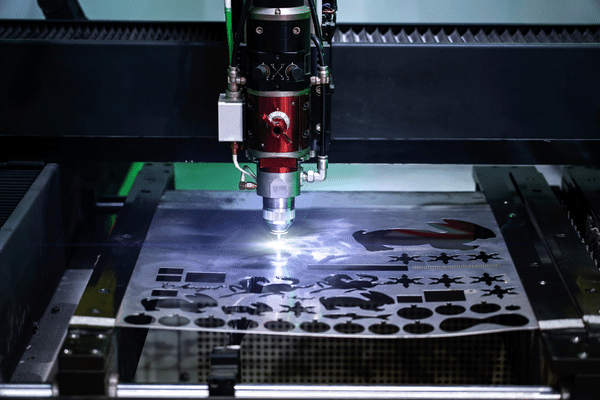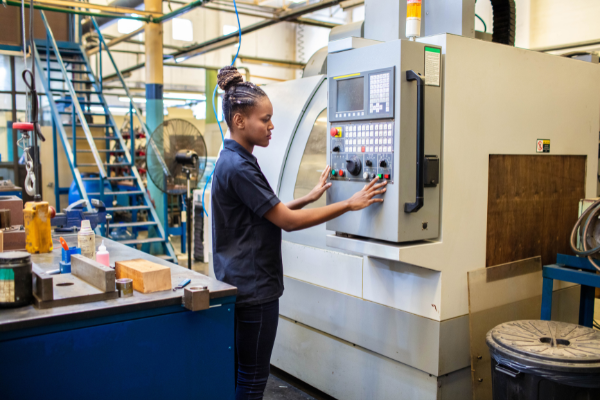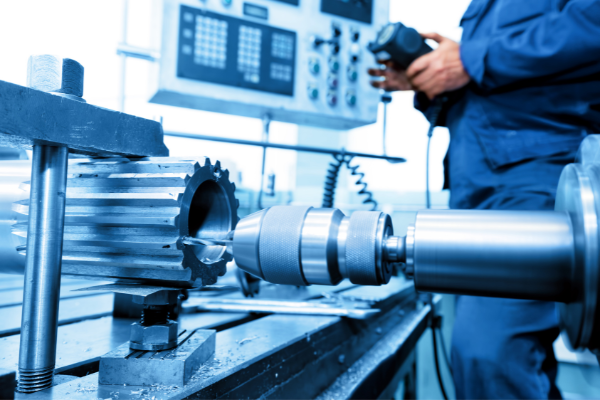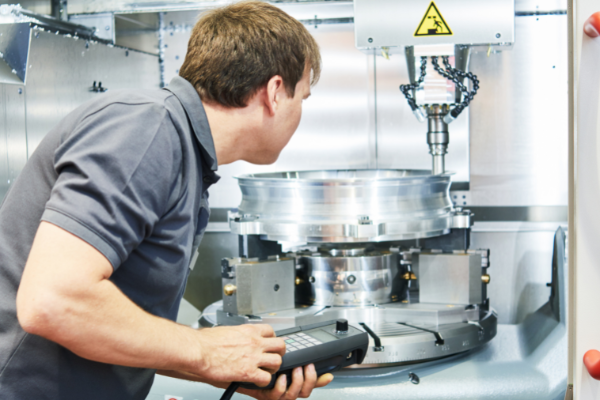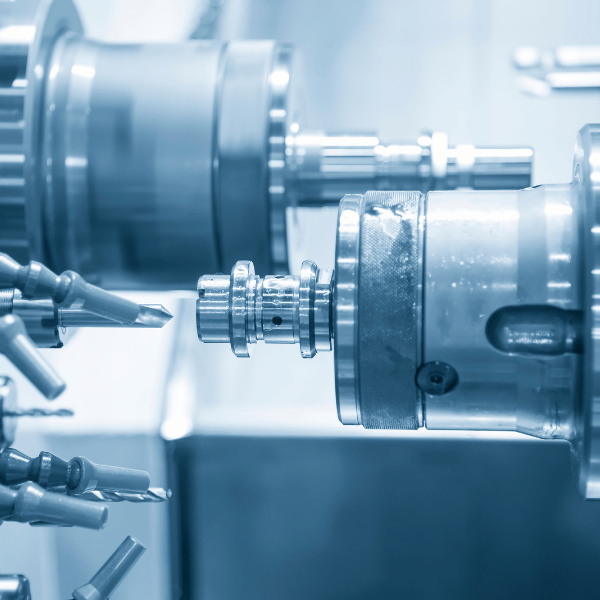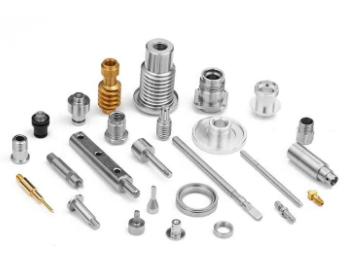Plating process: electroplating, pre-plating treatment, post-plating treatment
Plating: chromium plating, cadmium plating, zinc plating, nickel plating, copper plating, tin plating, silver plating, nickel-iron alloy plating
Depending on the method used, surface treatment techniques can be divided into the following categories.
1. Electrochemical method
This method uses electrode reaction to form a coating on the surface of the workpiece. Among the main methods are
(i) Electroplating
In an electrolyte solution, the workpiece is the cathode, and the process of forming a coating on its surface under the action of external current is called electroplating. Plating can be metals, alloys, semiconductors, or solid particles, such as copper plating, nickel plating, etc.
(II) Oxidation
In the electrolyte solution, the workpiece is the anode, under the action of the external current, so that the surface of the formation of the oxide film layer, called anodic oxidation, such as the anodic oxidation of aluminum alloy.
Chemical or electrochemical methods can do the oxidation of steel. The chemical method is to put the workpiece into the oxidation solution and rely on the chemical effect to form an oxide film on the surface of the workpiece, such as the bluing treatment of steel.
2. Chemical method
This method is without current action and uses chemical substance interaction to form a coating layer on the surface of the workpiece. Among the main methods are
(i) Chemical conversion film treatment
In the electrolyte solution, the metal workpiece in no current external action by the solution of chemical substances and workpiece interaction to form a coating layer on its surface, known as a chemical transformation film treatment. Such as metal surface bluing, phosphating, passivation, chromium salt treatment, etc.
(ii) Chemical plating
In the electrolyte solution, the surface of the workpiece is catalytically treated without the action of an external current. The process of depositing certain substances on the surface of the workpiece to form a coating due to the reduction of chemical substances in the solution is called chemical plating, such as chemical nickel plating, chemical copper plating, etc.
3. thermal processing method
This method is to melt or thermally diffuse the material under high-temperature conditions to form a coating on the surface of the workpiece. Its main methods are
(1) Hot dip plating
Metal workpiece into the molten metal, so that the surface of the formation of the coating process, known as hot dip plating, such as hot galvanizing, hot aluminum plating, etc.
(2) Thermal spraying
The molten metal atomization is sprayed on the surface of the workpiece to form a coating process known as thermal sprayings, such as thermal spraying zinc and aluminum.
(3) thermal stamping
The process of heating and pressurizing the metal foil to cover the surface of the workpiece to form a coating layer is called hot stamping, such as hot stamping aluminum foil, etc.
(4) chemical heat treatment
Workpiece contact with chemical substances, heating, in the high-temperature state ordered a certain element into the workpiece surface process, known as chemical heat treatment, such as nitriding, carburizing, etc.
(5) overlay welding
To weld so that the molten metal is set on the surface of the workpiece and the formation of the welding layer process, known as overlay welding, such as overlay welding wear-resistant alloys.
5. Vacuum method
This method is the process of forming a coating by vaporizing or ionizing the material deposited on the surface of the workpiece under a high vacuum. Its main methods are.
(1) Physical Vapor Deposition (PVD)
Under vacuum conditions, the process of vaporizing metal into atoms or molecules or ionizing it into ions and depositing it directly onto the surface of the workpiece to form a coating is called physical vapor deposition, and its deposited particle beam is derived from non-chemical factors, such as evaporation plating sputtering plating, ion plating, etc.
(2) ion injection
The process of injecting different ions into the surface of the workpiece at high voltage to modify its surface is called ion injection, such as boron injection, etc.
(3) chemical vapor deposition (CVD)
Under low pressure (sometimes also at atmospheric pressure), gaseous substances on the workpiece surface due to chemical reactions to generate a solid deposition layer process, known as chemical vapor deposition, such as vapor deposition of silicon oxide, silicon nitride, etc.
6. Other methods
Mainly mechanical, chemical, electrochemical, and physical methods. The main methods among them are.
(A) painting
Idle spraying or brushing method, the process of coating (organic or inorganic) on the surface of the workpiece to form a coating, known as painting, such as spray paint, brush paint, etc.
(B) Impact plating
The process of forming a coating layer on the surface of the workpiece by the mechanical impact is called impact plating, such as impact galvanizing.
(C) Laser surface treatment
Laser irradiation of the surface of the workpiece so that the structure of the change process is known as laser surface treatment, such as laser quenching, laser remelting, etc.
(D) Super Hard Film Technology
The technology of preparing a super hard film on the surface of the workpiece by physical or chemical methods is called super hard film technology. Such as diamond film, cubic boron nitride film, etc.
(E) electrophoresis and electrostatic spraying
1、Electrophoresis
Workpiece as an electrode into the conductive water-soluble or water-emulsified paint, and another electrode in the paint to form a solution circuit. Under the electric field, the paint solution has dissociated into charged resin ions; cations move to the cathode, and anions move to the anode. These charged resin ions, together with the adsorbed pigment particles, are electrophoresed to the surface of the workpiece to form a coating called electrophoresis.
2、Electrostatic spraying
Under the action of a DC high voltage electric field, the atomized negatively charged paint particles are directed to fly to the positively charged workpiece, to obtain the process of the paint film, called static spraying.
In addition, the following is a detailed description of several process methods of surface treatment types.
I. Oxidation and passivation
1, anodic oxidation usually refers to aluminum or aluminum alloy products or parts in a certain electrolyte and specific working conditions as the anode, through direct current, so that its surface generates a layer of corrosion-resistant oxide film treatment process.
2, phosphating steel parts in a solution containing phosphate chemical treatment so that its surface generates a layer of water-insoluble phosphate protective film processing.
3, bluing steel parts in a certain oxidation medium for chemical treatment so that its surface to generate a layer of blue-black protective oxide film treatment process.
4, chemical oxidation in the absence of external current, metal parts, and electrolyte solution, so that its surface to generate a layer of oxide film treatment process.
5, electrochemical oxidation to immerse the metal parts in a specific electrolyte solution as the anode, under the action of direct current, so that the surface of the generation of oxide film electrochemical treatment process.
6, chemical passivation in the absence of external current, metal parts, and electrolyte solution, so that its surface to generate a layer of passivation film treatment process.
7, electrochemical passivation to immerse the metal parts in a specific electrolyte solution as the anode, under direct current, so that the surface generates a layer of passivation film treatment process.
Electroplating
1, current density generally refers to the electrode (such as plating parts) unit surface area through the current value, usually using A/dm2 as the unit of measure.
2、 Polarization usually refers to the phenomenon that the electrode potential deviates from its equilibrium potential when a direct current flows through the electrode. Under the action of the current, the electrode potential of the anode is shifted to the positive direction, called anodic polarization; the electrode potential of the cathode is shifted to the negative direction, called cathodic polarization.
3, hydrogen embrittlement parts in the process of electrochemical degreasing, strong erosion, electroplating, etc., due to the reduction of part of the hydrogen to the state of atomic hydrogen infiltration into the base metal or plating layer to form stress, so that the base metal and the plating layer of the toughness of the decline in the phenomenon of brittleness.
4, rough plating due to the main salt concentration, plating solution pH, temperature, current density control, and too many solid impurities, resulting in coarse crystallization of the layer, the phenomenon of fine unevenness.
5、 Scorch Due to improper control of the main salt concentration, pH, temperature, and current density of the plating solution, the plating layer is sponge-like deposition, coarse and loose crystallization, and blackening.
6, pinhole Due to an insufficient wetting agent in the plating solution, pH is not normal, and too many organic impurities and hydrogen precipitation on the surface of the plated parts, etc., resulting in the phenomenon of pinpoint-sized pores in the plating layer.
7, pockmark Due to excessive heavy metal impurities or organic impurities in the plating solution, insufficient wetting agent, pH is not normal, etc., resulting in the phenomenon of small pits, sharp convex or large pores in the plating layer.
8、 Flowering Due to the additives, especially the brightening agent disorder, too many organic impurities, poor cleaning between processes and improper control of temperature and current density, etc., resulting in an uneven tone of the plating layer, a small gray, dark phenomenon.
9、 Peeling: Poor treatment before plating, too many impurities in the plating solution, improper control of pH and current density, etc., resulting in a poor combination of plating and substrate, bulging or peeling phenomenon.
Pre-plating treatment
1、 Chemical degreasing In the solution containing alkali, with the help of saponification and emulsification, the process of removing the oil scale on the surface of the parts or products.
2, organic solvent degreasing The use of organic solvents on the solubility of oil scale, the process of removing oil scale on the surface of the parts or products.
3, electrochemical degreasing (i.e., electrolytic degreasing) in a solution containing alkali, the parts as the anode or cathode, under the action of the current, the process of removing the oil scale on the surface of the parts or products.
4, chemical pickling in a solution containing acid removes the surface of metal parts rust and corrosion and oxide process.
5, chemical polishing metal parts in a certain composition of the solution and specific conditions, a short period of etching, to level the surface of the parts, to obtain a relatively bright surface process.
6, polishing the use of grinding wheels to grind the rough unevenness of the surface of the parts, to improve the flatness of the surface of the process.
7, mechanical polishing With the help of high-speed polishing wheels with fine abrasives and polishing paste, the parts are lightly ground and leveled to obtain a bright surface of the mechanical process.
8, sandblasting use purified compressed air; the dry sand stream is strongly sprayed onto the surface of metal parts to clean or roughen the processing.
Post-plating treatment
1、 Cleaning Cleaning is an important process of plating treatment. One is to clean the parts attached to the liquid to ensure that the anti-corrosion or decorative properties of the plating; the second is to avoid the parts attached to the liquid into the next process and cause pollution and even make the plating process in each process caused by defects, but also may make the plating layer due to infiltration of the plating solution to produce rust, whitening and other phenomena.
2, hydrogen drive is to eliminate the harm of hydrogen embrittlement, and the use of heat treatment, the hydrogen from the parts of the process.
3、 Passivation
4、 Plating anti-discoloration treatment (the main object of treatment is silver plating)
Measures to prevent discoloration of the plating is to isolate the plating from the external corrosive media or other methods to improve the corrosion resistance of the plating. The following methods are commonly used.
(1) Generate a protective film on the plating layer (such as chemical passivation, electrolytic passivation, electrophoretic method, etc.).
(2) Depositing a layer of precious metals (such as gold, rhodium, palladium, etc.) on the plating layer or electroplating silver-based alloys with a certain resistance to tarnishing (such as silver-gold alloy, etc.). This method is expensive and only used for parts requiring high stability and wear resistance.
(3) Covering the plated layer with a thin film of organic material. This method has greatly improved the anti-discoloration ability of the plating layer, and if used with the first (1) method, its effect is better. However, it hurts the contact resistance and welding performance of the metal and is suitable for parts with low requirements for electrical performance.
(4) impregnate a layer of corrosion inhibitor to prevent discoloration of the plating, such as TX-type silver tarnish inhibitor. This method has good anti-discoloration performance and little effect on the metal’s welding performance and contact resistance.
Types of electroplating layers
I. The nature of zinc and the use of zinc plating.
1、 Zinc is a greenish-white metal, a chemically active metal, the most important feature of its chemical properties is that it is amphoteric, i.e. its metal, metal oxide or hydroxide is soluble in both acids and bases.
- Zinc plating is widely used as a protective coating for iron and steel metals.
Two, the type of galvanizing process
Galvanizing process is divided into two categories: cyanide-free galvanizing and cyanide galvanizing. According to the different complexing agents, there are several types of cyanide-free galvanizing: ammonia tri acetic acid-ammonium chloride, ammonium chloride, alkaline zincate, sulfate, and pyrophosphate, etc. Cyanide galvanizing is generally divided into three types: high cyanide, medium cyanide and low cyanide galvanizing. - The nature of cadmium and the use of cadmium plating
- Cadmium is a soft, grayish-white malleable metal with chemical properties similar to zinc but insoluble in alkali.
2, due to cadmium plating pollution of the environment is serious and harmful, cadmium poisoning is caused by “pain disease”, and because of the expensive cadmium, basically with a galvanized layer or alloy plating instead of the cadmium plating layer.
Fourth the type of cadmium plating process.
More cadmium plating process types used in production are cyanide cadmium plating and cadmium plating without cyanide, that is, complex cadmium plating, acid sulfate cadmium plating, etc.
Five, zinc and cadmium plating quality requirements
1, the normal appearance of the plating, crystalline meticulous, uniform color, passivation film integrity, zinc is colored, cadmium is off-white. Zinc white passivation film should be white or slightly light blue.
2、 Thickness plating thickness should meet the requirements of technical conditions.
3、 Allowable defects
(1) Slight water stains and jig marks.
(2) slightly darkened passivation film after hydrogen removal.
(3) complex parts, large parts or over-length parts with slight roughness on the sharp, edges and ends, which do not affect the assembly.
(4) slightly darker localized at the junction of the weld and lap.
4、 Not allowed defects
(1) rough, burnt, pockmarked, black spot, nodular, blistered, peeling plating.
(2) Plating dendritic, spongy and severe streaking.
(3) Loose passivation film, severe passivation liquid stains.
(4) local no plating (except at process documents)
Copper
I. The nature of copper and the use of copper plating
1, copper is rose-red, and lustrous. It has good electrical and thermal conductivity, is rich in flexibility, is easily soluble in nitric acid, also soluble in heated concentrated sulfuric acid, and slower in hydrochloric acid and dilute sulfuric acid.
- Copper plating is often used as the base layer for decorative plating of steel parts and as an intermediate layer for other multi-layer plating, and also as a functional plating layer.
Second, copper plating process types
1, according to the nature of the plating solution: can be divided into cyanide copper plating, copper sulfate plating, copper pyrophosphate plating, citrate copper plating, ethylenediamine copper plating, organic phosphate copper plating, etc.
2, according to the decorative classification: generally divided into copper plating and bright copper plating.
Third, the quality of copper plating requirements
Due to the different process methods of copper plating out of different uses, so the requirements for each process copper plating is also different.
The general requirements are uniform and detailed plating, firm bonding, no skin, no blistering, etc.
Cyanide copper plating is often used as a base layer for thick copper plating or other plating of steel parts, so the requirements for cyanide copper plating are mainly meticulous crystallization and uniform coverage.
For acid bright copper plating layer, the brightness is required to reach mirror brightness and uniform color, and no defects such as orange peel, scorch, pockmark, etc., and a certain thickness of plating, because only a certain thickness of copper plating has corrosion resistance.
Nickel
A, the nature of nickel and the use of nickel plating
1, nature: nickel is a silver-white metal, high hardness; high chemical stability; very stable in organic acids, very slow dissolution in sulfuric acid and hydrochloric acid, in the concentrated nitric acid in a passivated state, easily soluble in dilute nitric acid.
2, use: nickel plating is very stable in air, which is mainly due to the strong passivation ability of nickel metal, the surface can quickly generate a very thin passivation film, so that the nickel substrate is isolated from the air, so it can resist the corrosion of the atmosphere, alkali and certain acids. Meanwhile, in the simple salt plating solution of nickel, extremely fine crystalline layer can be obtained and has good polishing performance. Polished nickel plating, you can get a mirror bright appearance, so nickel plating is often used for decorative plating.
Now nickel plating often use some bright agent, so that the plating solution can be directly obtained in the mirror bright nickel plating layer. In order to improve corrosion resistance, multi-layer plating method is often used, such as copper/nickel/chromium, nickel/copper/nickel/chromium, double-layer nickel, triple-layer nickel and other processes, so nickel plating is mainly used as a protective-decorative plating layer, which is widely used in industrial products such as automobiles, bicycles, clocks and watches, medical devices. It is widely used in automotive, bicycle, watch, medical equipment and other industrial products. It is usually used as an intermediate layer.
Nickel plating has high hardness, which can improve the surface wear resistance of products. In the printing industry, nickel plating is often used to improve the hardness of lead surface.
Black nickel plating is mainly used for those parts in optical instruments that need matting.
Second, the type of nickel plating process
1, according to the nature of the composition of the plating solution: can be divided into sulfate plating solution, chloride plating solution, citrate plating solution, amino acid salt plating solution, fluoroborate plating solution, pyrophosphate plating solution, etc. Sulfate plating solution can be divided into sulfate low-chloride plating solution and sulfate high-chloride plating solution according to the amount of chloride. The most widely used is sulfate low-chloride plating note.
2、 According to the classification of coating decorative: can be divided into ordinary plating solution, semi-bright plating solution and bright plating solution.
3、 According to the classification of deposition speed: it can be divided into general nickel plating, and fast nickel plating.
4、 Classified by usage: can be divided into general decorative nickel plating, hard nickel, and black nickel, etc.
III. Multi-layer nickel plating
Multi-layer nickel plating refers to the plating of two or three layers of nickel on the same substrate with different plating solutions and working conditions. Its purpose is to improve the corrosion resistance of nickel plating.
1、 Double-layer nickel Double-layer nickel that is semi-bright nickel/bright nickel. Its nickel plating process is, first on the substrate deposited a layer of semi-bright, better leveling, very low sulfur content, columnar organization of the nickel layer, and then plated with a layer of higher sulfur content, laminar organization of the full bright nickel layer. The thickness of the semi-bright nickel layer accounts for 70% to 80% of the total thickness of the plated layer. Double nickel corrosion resistance to improve the mechanism is that the two layers of nickel contains different amounts of sulfur, so that their electrode potential is different, the amount of sulfur bright nickel potential is more negative, low sulfur content of semi-bright nickel potential is more positive, when the corrosive medium through the pores or cracks in the chromium layer corrosive bright nickel layer, and penetrate the bright nickel layer to reach the semi-bright nickel layer, the two layers of nickel layer consists of corrosion microcell, bright nickel layer priority corrosion, so that the direction of corrosion from Longitudinal to lateral development, semi-bright nickel layer is protected, thus protecting the base metal.
2, three layers of nickel
(1) Semi-bright nickel/impact nickel (high-sulfur nickel)/bright nickel, i.e., a layer of impact nickel is applied between the two layers of nickel. Impact nickel layer thickness of 1μm, containing 0.1% to 0.2% sulfur, higher than the bright nickel layer, so double called high sulfur nickel. Three layers of nickel corrosion resistance to improve the mechanism is that when the bright nickel layer is penetrated by corrosion, the exposed impact nickel layer and the bright nickel layer between the composition of corrosion microcell, impact nickel layer priority corrosion, so that corrosion by the lateral development, thus delaying the corrosion of the semi-bright nickel layer, that is, the protection of the base metal. Its corrosion resistance is higher than that of double-layer nickel.
(2) Semi-bright nickel/bright nickel/nickel composite plating (nickel confinement) That is, a layer of nickel composite plating is applied on the double-layer nickel, that is, a layer of nickel plating solution deposited by nickel and insoluble solid particles of nickel plating, which can reduce the porosity of nickel plating. Chromium plating after nickel closed plating can make the chromium layer to form many microporous, called microporous chromium. This is mainly due to the fact that when chromium is plated on the nickel closed plating, there is no chromium deposited on the particles because the non-metallic solid particles are not conductive, thus making the chromium plating microporous. Microporous chromium can improve corrosion resistance, because the number of microporous and uniform, and thus the corrosion current at each microporous will be much smaller than the corrosion current of the nickel layer under the conventional chrome plating coarse crack, so that the corrosion of the nickel layer slows down, and the lateral development, thus protecting the base metal.
Four, the quality of the plating requirements
Nickel plating layer, like other plating, requires a meticulous, uniform plating, combined with a firm, no skin, no blistering. For ordinary nickel plating layer, the required thickness must meet certain requirements. Bright nickel plating, requiring uniform brightness, does not allow the phenomenon of “flowering”. Multi-layer nickel, the main assessment of the bond between the layers must be good, never allow shelling, peeling phenomenon, but also to ensure that the thickness of each layer should be in order to achieve the requirements of corrosion resistance.
Tin
A, the nature of tin and the use of tin plating
1, nature: tin is a silver-white metal, with corrosion resistance, anti-discoloration, non-toxic, solderable, soft and ductile properties. High chemical stability, difficult to discolor in the atmosphere, and sulfur and sulfides almost do not work. It is almost insoluble in dilute solutions of sulfuric acid, nitric acid and hydrochloric acid. Especially it is stable in organic acids. Only in the heating conditions of concentrated acid and strong alkali solution will slowly dissolve.
2、 Use: Tin belongs to cathode plating. Therefore, only when the plating is non-porous, it can protect steel from corrosion. Tin plating on steel products with high requirements, available copper or brass plating as a base layer to improve corrosion resistance.
Tin is soft and ductile, and is used for tin plating and high-precision thread plating to improve the lubrication capacity and sealing performance of the sliding parts of the grinding machinery.
Tin is non-toxic and stable in organic acids, so it is used extensively for tin plating of edible utensils.
Tin plating is also used to prevent nitriding of steel parts and to prevent the action of copper and sulfur, etc.
Second, the type of tin plating process
The tin plating process, according to the classification of tin plating solution, can be divided into two categories of alkaline and acidic tin plating.
Alkaline tin plating, fine crystallization of the layer, good porosity, good brazing properties, widely used.
Acid tin plating a smooth and meticulous layer of high corrosion resistance, mostly bright tin, but the porosity is high.
Third, the quality of the plating requirements
1、 The thickness of the plating meets the requirements of technical conditions.
2, the plating is silver-white, uniform, and meticulous, with good bonding.
3, the plating does not allow blistering, peeling, roughness, spots, darkening, leakage, and obvious stripes.
4、 The plating layer is allowed to have slight water stains and jig marks.
Chromium
I. The nature of chromium and the use of chromium plating
1, nature: chromium is a slightly blue silver-white metal, in the air is very easy to passivate, the surface generated a very thin passivation film, so can be in the atmosphere can maintain the original luster for a long time, showing the nature of precious metals. Chromium and sulfuric acid, nitric acid and many organic acids as well as hydrogen sulfide, alkali, etc. do not occur chemically, but chromium can be dissolved in hydrohalic acid (such as hydrochloric acid) and hot sulfuric acid.
1、 Hard chromium The hard chromium layer with high hardness and good wear resistance obtained from chromium plating solution under the condition of strict control of temperature and current density (higher than decorative chromium plating).
2、 Milky chromium A milky chromium layer with less porosity, higher corrosion resistance and lower hardness obtained by changing the working conditions of chromium plating solution.
2、 Uses.
(1) Protective decorative chromium plating on the polished plating, or bright plating (bright copper or bright nickel) on the surface of 0.25 ~ 2μm chromium plating, can make the surface of the product more bright, and has a certain wear resistance, heat resistance, has been widely used in bicycles, clocks and watches and other industrial products. At the same time, it can also be used for reflective mirror, because the anti-sulfide performance of chromium plating layer is stronger than silver plating layer.
(2) Wear-resistant chrome (hard chrome) Wear-resistant chrome plating on steel substrates, chrome plating has a hardness of 850~1200HV, with high wear resistance, and is widely used in the manufacture of gauges, cutting tools, shafts of various machines and other machine parts.
(3) black chrome plating on certain instruments or precision equipment, in order to prevent reflection some parts or black chrome plating.
(4) Loose hole chrome has good lubrication and wear resistance, mainly used for internal combustion engine cylinder, cylinder liner, piston ring, crankshaft and other parts.
Second, the type of chrome plating process
1、 Classified by the nature of the plating solution components
(1) general chromium plating containing sulfuric acid, according to the amount of chromic anhydride content, can be divided into high concentration chromium plating (chromic anhydride content of 350g/L or more), medium concentration chromium plating (chromic anhydride content of 250g/L), low concentration chromium plating (chromic anhydride content of 60g/L or so) three types.
(2) Chromium plating containing fluorine or fluorosilicate
(3) Chromium plating containing a combination of sulfate and fluorosilicate
(4) Auto-conditioned chromium plating containing strontium sulfate and potassium fluorosilicate
(5) Chromium plating with tetrachromate
(6) Trivalent chromium chromium plating
2, according to the decorative classification
(1) Bright chrome plating
(2) General chromium plating
(3) Milky chrome
(4) Black chrome
3、 Classified by usage
(1) Protective and decorative chrome plating
(2) Wear-resistant chrome plating (also known as hard chrome)
(3) Porous chrome plating (also known as loose hole chrome plating)
(4) Black chrome
Three, the quality requirements of chrome plating
1, decorative chrome plating: the appearance of a slightly blue mirror bright plating, combined with solid, complete plating, the brightness is basically uniform, allowing a slight fixture marks in areas that do not seriously affect the appearance, due to the different surface states of the material, for a part of this part allows a slightly uneven color and luster differences on the same part, plating thickness of 0.3 ~ 0.5μm.
2, wear-resistant chrome plating: the plating thickness should meet the requirements of the drawings, combined with a solid, basically uniform plating, color and luster is slightly blue silver white to bright gray. For complex parts and large parts allow sharp edges and edges with slight roughness, but does not affect the quality of assembly. For the parts to be processed (fine grinding) after chrome plating, the plating is allowed to have slight particles, pinholes and other defects that can be excluded after processing. Serious ovalness and taper defects are not allowed. Plating after fine grinding skinning or peeling, need to be re-chromium plating after all grinding chromium plating.
Difference between chrome plating, nickel plating, zinc plating and cadmium plating
Chrome plating. Generally, there are decorative chrome, hard chrome, and non-glossy chrome, etc. Decorative chromium plating parts surface bright, beautiful, generally first plated a layer of copper, and then chromium plating on the copper surface. Hard chrome is mainly used for the surface treatment of gauges, the surface is brighter, wear-resistant and rust-proof.
Nickel plating.
Generally also decorative role, usually to first plating a layer of copper, and then nickel plating. Nickel plating layer should not be too thick, otherwise it is easy to appear the phenomenon of storm skin.
Galvanized.
Galvanizing can be done in various colors, mainly due to different passivators. The anti-corrosion properties of different colors of galvanized layers are different, generally the worst with blue and white zinc, and the best with military green. Generally, colored zinc is commonly used, which has better anticorrosive effect and relatively lower cost.
Cadmium plating.
It is also a method of anti-corrosion surface treatment for parts, but it is toxic and mainly applied to marine environment and seawater corrosion, and is not applicable in ordinary atmospheric environments
The nature of silver and the use of silver plating
1、 Properties: Silver is a precious metal with silver-white luster that can be easily polished. Thermal conductivity, electrical conductivity and light reflection properties are excellent, while there is good corrosion resistance and weldability.
2、 Uses.
Silver in the metal conductivity is the best, widely used in electronic appliances, aviation, instrumentation and other industries
Silver reflective ability, used in accordance with the light reflector silver plating. Silver has a beautiful silver-white luster and is used in decorative silver plating.
Various chemical utensils and instruments also use silver plating to prevent them from corrosion in alkaline solutions.
Silver plating process, bright silver plating, hard silver plating, bright hard silver plating and thick silver plating, widely used.
Second, silver plating process classification
Silver plating is divided into two categories: cyanide silver plating and non-cyanide silver plating.
Three, the quality of the plating requirements
1, the thickness of silver plating layer should meet the technical requirements.
2, silver plating is silver-white, or passivated with a slightly yellow, uniform and meticulous, good bonding force.
3, silver plating layer does not allow roughness, spots, blistering, shedding, darkening, leakage and obvious stripes.
4、 The silver plating layer is allowed to have slight water stains and jig marks.
Copper-tin alloy
A, the nature and use of copper-tin alloy plating
Copper-tin alloy plating is commonly known as bronze plating. According to the amount of tin content, can be divided into low tin bronze plating (tin content of 2% to 15%), tin bronze plating (tin content of 16% to 23%), high tin bronze plating (tin content of 40% to 50%) These three types of bronze plating has its different properties and uses.
1、 In low tin bronze plating, the color of the plating increases from pink to gold as the tin content increases. Its hardness and porosity are low, and it has high anti-corrosion performance and polishing performance. However, it is easy to oxidize and discolor in air, and the lower the tin content, the easier it is to discolor, so the surface of the plating must be covered with chromium. It is widely used in light industry, handicraft, machinery, instrumentation and other industries as a protective and decorative low-nickel base layer.
2、 Medium tin bronze plating is golden yellow, its hardness and oxidation resistance is higher than low tin bronze plating. However, due to the high tin content of the plating, the bottom layer as a protective decorative plating is easy to blossom after the set of chromium, so it is less used in production.
3, high tin bronze plating, also known as white bronze plating, also known as mirror copper, silver-white. It is not easy to oxidation discoloration, has a high hardness and wear resistance, after polishing has good reflective properties, can resist organic acids, weak acids, weak alkalis and sulfides corrosion, while having good brazing and electrical conductivity. Generally, it can be used to replace silver and chromium as a protective and decorative coating for reflective instruments, contact points of electrical parts, instruments and meters, and daily commodities. However, because the plating has small cracks and pores, its corrosion resistance is poor, not suitable as the plating of parts working in harsh environments. In addition, the nature of the coating is more brittle.
Second, the quality of copper-tin alloy plating requirements
1, uniform and detailed plating, good bonding.
2, the plating does not allow roughness, spots, blistering, peeling, spongy or dark gray phenomenon.
3, the plating allows the edge of the parts to have a slight roughness and water jig marks.
Nickel-iron alloy
A, the nature and use of nickel-iron alloy plating
Nickel-iron alloy plating is white, the iron content is generally about 10% to 30%. The plating has hardness, high brightness, ductility, good corrosion resistance, low internal stress and other characteristics. Nickel-iron alloy plating is also a good magnetic plating, which has special use in the electronics industry, especially in the electronic computer industry. Bright nickel-iron alloy plating can be widely used instead of bright nickel as a decorative protective substrate plating. The use of double or triple nickel-iron alloy/chromium, instead of conventional copper/nickel/chromium decorative plating, is very effective and widely used in machinery, hardware, light industry and home appliance products.
Characteristics of nickel-iron alloy plating Decorative bright nickel-iron alloy plating has the following characteristics.
(1) The plating contains about 30% of iron, which can reduce the cost by replacing metallic nickel with cheap iron.
(2) The concentration of metal ions in the plating solution is 1/3 of that of bright nickel plating solution, which not only reduces the cost of tank preparation, but also reduces the loss of parts brought out, and at the same time reduces the amount of plating wastewater treatment.
(3) No need for copper as the base layer or other intermediate layers, can be directly plated on the steel substrate, reducing the process.
(4) Plating solution has leveling, dispersion, covering ability, resistance to impurity ion interference, high bonding of plating layer, low internal stress, high hardness and brightness, excellent ductility and corrosion resistance.
(5) Wide process range, stable performance of plating solution, easy operation and maintenance.
(6) Easy to set chromium.
(7) Bright nickel plating solution can be easily converted into nickel-iron alloy plating solution.
(8) It can replace bright nickel plating and eliminate the bad plating layer caused by iron impurities in the plating solution.
(9) Nickel-iron alloy plating has excellent ductility and is better than nickel plating, which is suitable for tubular parts, deep-hole parts and other parts that need deformation processing after plating.
Second, the quality of nickel-iron alloy plating requirements
1, the thickness of the plating layer meets the requirements of technical conditions.
2, the plating is white, bright, meticulous, uniform, good bonding force.
3, the plating does not allow roughness, spots, fogging, pinholes, orange peel, burrs, leakage and obvious stripes
4、 The plating layer is allowed to have slight water stains and jig marks.
.


